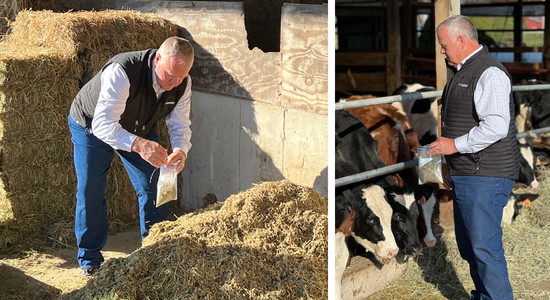The Challenge of Sampling for Mycotoxins

Written By: John Doerr, Ph.D., PAS, Dpl. ACAP Vice President, Science & Technology
Back in the early 1960’s, when the news of aflatoxin was just ‘going viral’, a team of agricultural engineers went to work on determining the rules for correct sampling of corn. From that, the statistical methods approach for obtaining samples developed and has been a useful guide, but it is often the least followed in practice. It’s 2022. What do we do today about the sampling issue?
Fact: 80% of all error in toxin analysis comes from the sampling. That means that in the worst case when your test report says 100 ppb of T-2 toxin, the real value could be as low as 20 or as high as 180 ppb. What does that mean for your Holstein, Duroc, or Cobb700?
Fact: for low error, accurate analysis of shell corn, about 5 kg of properly sampled grain is required. After coarse grind, 1 kg is sampled for additional fine grinding from which the 50 gram analytical sample will be taken. Look at it another way...that 5kg initial shell corn sample equals about 4.3 kg dry matter. Translate that into sampling pelleted feeds (not too hard) or wet rations, such as dairy TMR or high moisture corn. Now it becomes significantly problematic.
Fact: commercial laboratories aren’t too concerned about what amount of sample you want to send; rather, they have set limits on their drying capacity. You send in 4.3 kg dry matter basis of a 60% moisture feed/forage, the lab is getting almost 11 kg wet weight basis. They will NOT dry that much.
Some guidance: Typically, your goal is to provide a minimum of 500 gm of representative sample. That’s also about what you can pack into a 1L zip bag. Representative? Probing a grain delivery truck or stream sampling from bulk storage bins just means randomizing small collections, mixing well, and then taking your submission sample. Forages, wet feeds...again, small (!) collections and combining very carefully; dairy TMR if mixed too much will undergo particle separation and the result will not reflect the feedstuff. Of course, you’ll have to live with some error which means you have to learn to interpret your mycotoxin report correctly. Given the potential error range, using some arbitrary ppb or ppm number will be the wrong approach. Instead, based on history or professional guidance, categorize your results as to low, moderate, or high risk and take action accordingly. That’s not foolproof, but it does a better job than fixating on some ppb amount. Example: some official ‘guideline’ tells you 500 ppb DON is the limit for a breeding animal. Your test comes in at 499 ppb. That does not mean your animal is safe! And those guidelines rarely allow for the fact that a majority of animal feeds contain multiple mycotoxins, most of which have high capacity for synergy.
